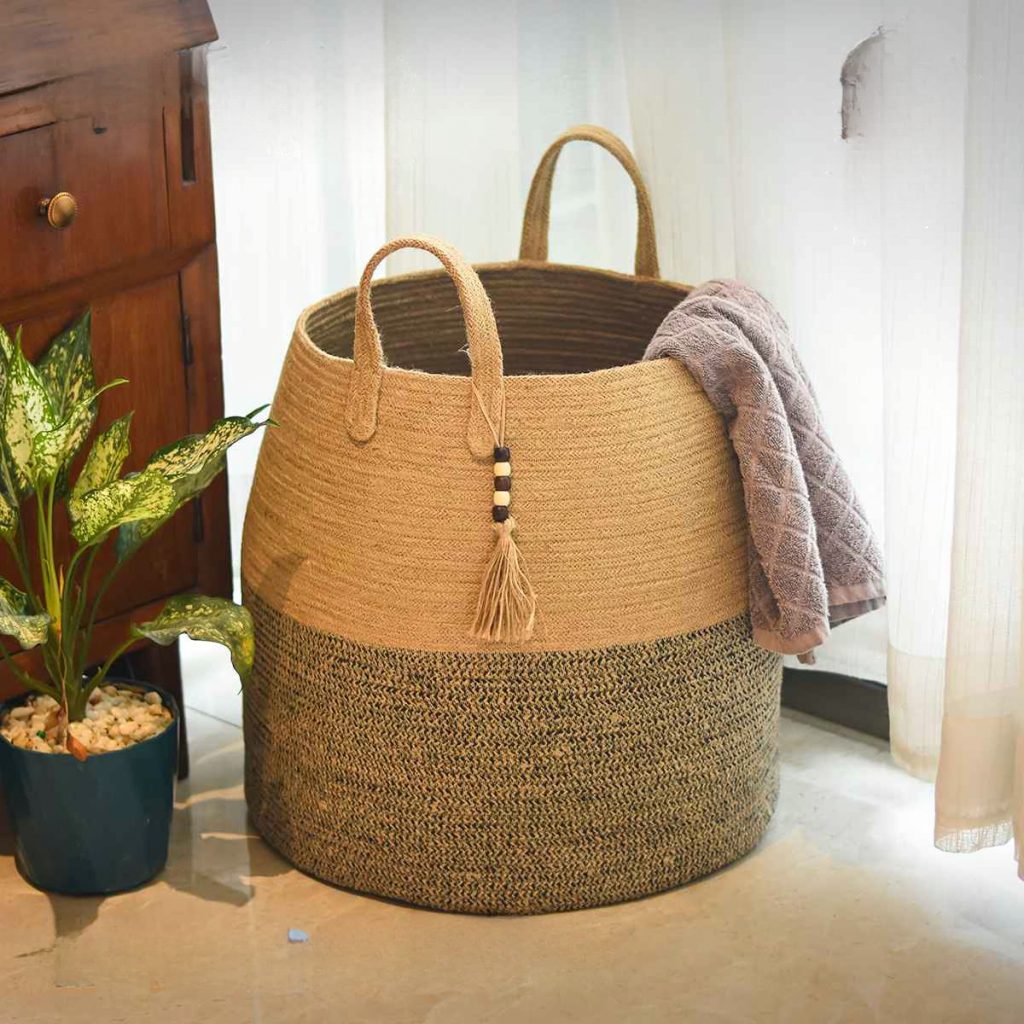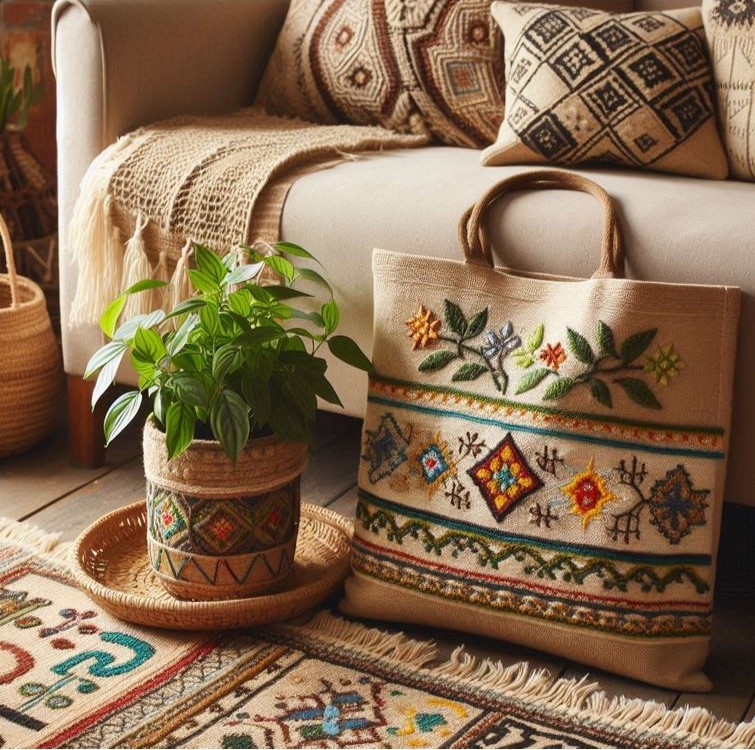- info@qaafglobal.com
- +88 019 111 77 2 99

QAAF GLOBAL is a handicrafts manufacturing & exporting company in Bangladesh. QG offers quality products, competitive prices and on-time delivery. We deliver high-quality, eco-friendly different types of Baskets, Bags, Mats, Rugs. We can use these different types of products in different places. Because of these things many forms of decoration benefit from it since it gives character and a touch of natural beauty.
We have many skilled and dedicated artisans who can manufacture a large volume of handmade jute products every month. In Bangladesh, it is well known as an authentic exporter of handicrafts. More than 5,000 people are involved with this profession directly or indirectly to secure a sustainable business by ensuring a large production volume. We always practice fair trade principles to implement a better working environment. The most popular jute products are jute baskets, jute bags, jute cylinders, jute laundry baskets, jute floor mats, jute placemats, and jute rugs. We try to protect against catastrophe by using handicrafts that are 100% natural.
The jute and handicraft industries are two distinct sectors that share a close relationship due to the use of jute as a material in handicraft production. Jute is a versatile and eco-friendly material that is mainly grown in Bangladesh and used to make a variety of products, including bags, rugs, and textiles. The handicraft industry involves the production of handmade goods using traditional techniques and skills, and often utilizes jute as a sustainable material for various crafts such as weaving, embroidery, and pottery. Both industries provide employment opportunities and contribute to the local economy, while promoting cultural traditions and sustainable practices. The jute and handicraft industries are important for the development of rural and marginalized communities and help to foster sustainable economic growth. Integral inspection, audit, training, and lab testing can be extremely beneficial to the jute and handicraft industries. These procedures can assist increase the quality and security of the raw materials used in production, point out potential process improvements, and guarantee adherence to rules and regulations. Integral training can lessen the environmental effect of these industries while promoting ethical behavior and improving working conditions for employees. By implementing these procedures, the jute and handicraft sectors may boost their standing and competitiveness while simultaneously promoting sustainable economic growth and preserving the environment.

Bangladesh is one of the important suppliers of handicrafts to the world market. The Bangladeshi handicrafts industry is highly labor intensive and is a cottage-based industry. It is highly decentralized, being spread all over the country in rural and urban areas. Artisans not only work on full time but there are numerous artisans who are engaged in crafts work on part time basis. The industry provides employment to over 3 million artisans who include a large number of women and people belonging to the weaker sections of the society. Rooted deeply in the long heritage of the land, it grew gradually over centuries representing the rich, unique traditions of the soil, its people and their distinctive culture. The nourishing factors that helped the sector flourish is love of the artisans for their craft, coupled with their untiring effort to survive against odds. Of late, however facilitating services offered by the public and various private agencies to organize and strengthen the sector have paved the way for better and efficient performance of the sector. This has definitely resulted in an integrated and structured approach toward production and marketing and today the handicraft industry of Bangladesh look much well organized then it was a decade back. However, there is no denying the fact that despite considerable advancement, potential of the sector still appears largely unexplored and a bulk of the resources untapped. Innovative adaptation is yet to reach a satisfactory level. Beside the supply side constraints, dearth of technology and inadequate export marketing drive continue to be the main impediments for speedy growth of the industry.

Qaaf Global is a reliable manufacturer & exporter in Bangladesh. Enjoy a hassle-free buying experience from us.

©2024 QAAF GLOBAL. All Rights Reserved.